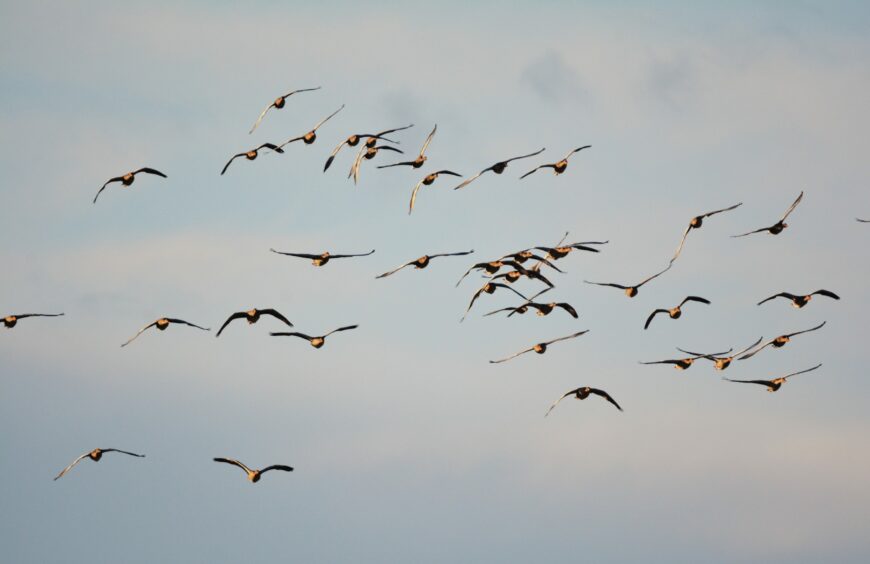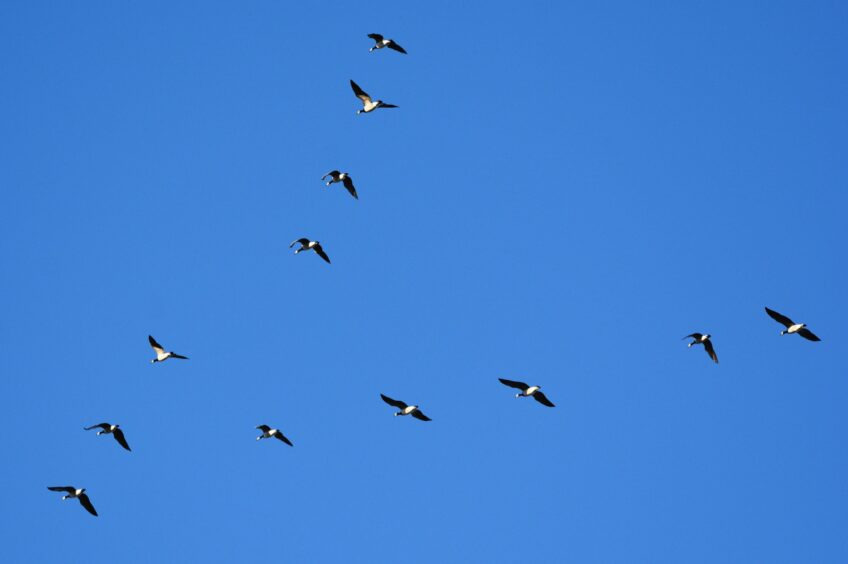The ice crunched under my feet and the mud beneath was frozen hard, creating an impenetrable crust that failed to yield.
Despite the brackish influence of the tide, a prolonged period of deep frost had hardened the mudflats of the inner Solway Firth in northern Cumbria.
The concentration of salt in the waters of the estuarine channel of the River Eden by the village of Bowness-on-Solway was clearly too weak to have stemmed the impact of severe frost.
Call of geese
Ice crystals on the shore glinted under the sunbeams and the call of geese drifted across the still air, a haunting sound that is the essence of winter and a wild enchantment from the north.
I wandered over the short grasses of the saltmarsh and ventured down onto the frozen mud, where across a narrow sliver of mirror-like water lay the Scottish shore.
The gentle current of the River Eden drifted lose groups of wigeon out towards the firth, who were cleverly using the flow as an energy-efficient means of moving from one area to another.
A large flock of lapwings roosted on a tidal mudbank, intermittently swirling into the air on broad-flapped wings before quickly settling again.
A sweep of my binoculars revealed a congregation of oystercatchers on another tidal bank, as well as many curlews and redshanks.
Then the noise – that special noise – the high-pitched clamouring of a skein of barnacle geese that swept overhead, their dark bodies and pale faces caught in perfect vision by the clear winter light.
Another gaggle of geese – this time greylags – etched the sky, before making a tight turn over a frozen pool on the saltmarsh.
Tingles of excitement
The thrill of glimpsing geese invariably sends tingles of excitement coursing through my veins, which I think it is due to the combination of geese and the empty landscape merging as a single entity, creating a wonderful wildness that stirs the heart like few other natural experiences can.
Greylag geese are common, both as winter migrant arrivals and resident breeders, while barnacle geese are much scarcer with the Solway area representing a crucially important wintering site.
The entire breeding population of the Svalbard (Spitzbergen) archipelago off northern Norway winters on the Solway, making it an area of immense conservation importance.
Avian flu has wreaked a terrible toll on Solway barnacle goose numbers, with over a third lost during the previous winter.
However, last summer’s breeding season was good, and mortalities this winter have so far been low.
Sadly, this contrasts with a separate population of barnacle geese that breed in Greenland and winter in the Hebrides, where over 800 have been found dead on Islay in recent months.
The virus is part of the cruel hand of nature, yet the robustness of life always seems to shine through.
Hopefully in the years to come numbers will recover to former levels, and the evocative calls of barnacle geese will continue to drift across the saltmarshes of the Solway and the wild expanses of the Hebrides.





Conversation